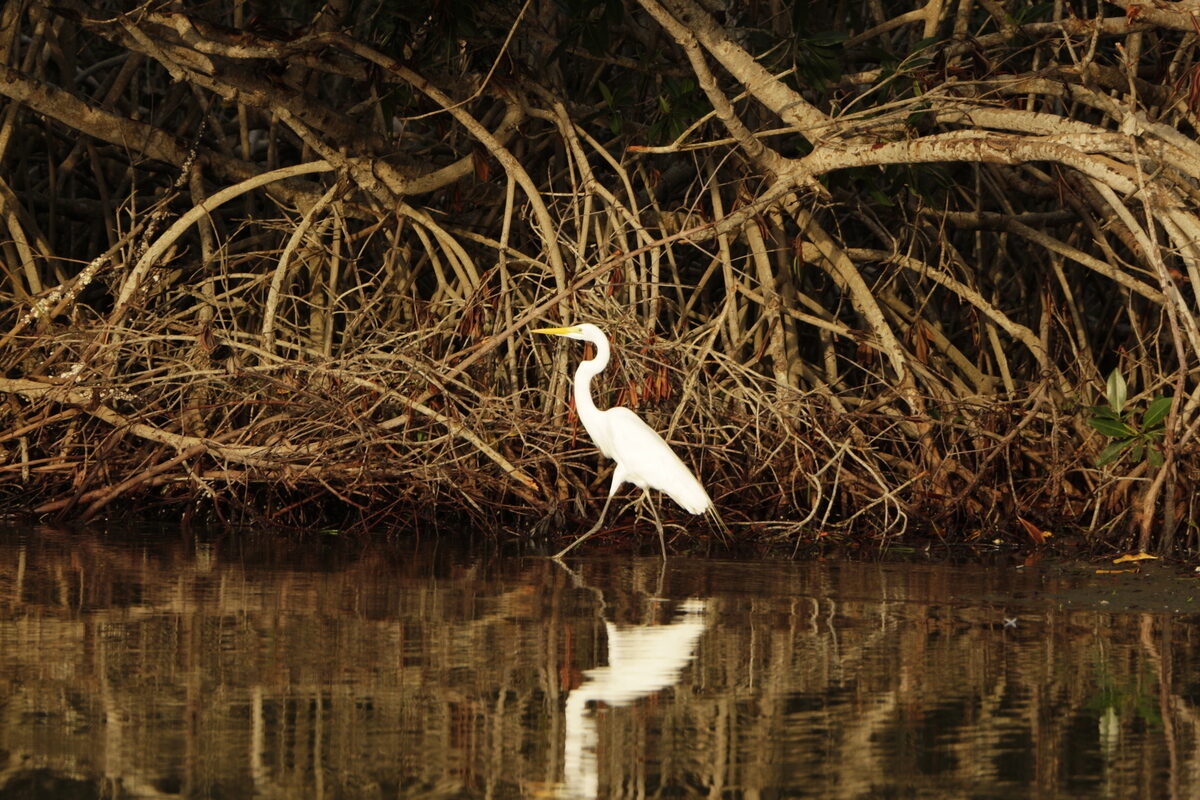The Colombian Caribbean coast is a land rich in natural resources, unique landscapes, and magical places that would not be the same without the variety of plants and animals that inhabit them. In The Dreamed City, we are aware of the connection between human presence and the local nature, which is why in this blog, we will tell you more about our surrounding environment.
In the Colombian Caribbean, we have ecosystems that make our territory a special place, including mangroves and tropical dry forests, environments that host a diversity of animal species and plants.
Mangroves:
The protagonists of songs, inspiration for artists, and a beautiful companion to our coasts, mangroves are a key component of our ecosystem. As explained by the Ministry of Environment, “their importance lies in the fact that they protect a large number of organisms in their trunks, among their roots, or in the mud, such as bacteria and fungi, which help decompose organic materials and even transform toxic substances into sulfur, purifying the water that reaches the sea.” Additionally, mangroves serve as coastal stabilizers, controlling erosion and providing protection from waves and sea winds.
Fact:
Did you know that mangroves were the livelihood of many pre-Columbian coastal and inland communities in the Americas?
Tropical Dry Forest:
The silent companion of the Caribbean, though not as well-known or studied as many scholars acknowledge, it is a fundamental part of Cartagena’s landscape. According to the Ministry of Environment, “It is defined as a vegetative formation with a continuous forest cover, found between 0-1000 meters of altitude, with temperatures exceeding 24°C, making it typical of warm climate zones.” In the past, these forests covered a large area, but human intervention has reduced their presence. Today, they can be found in some places in Colombia, including the city of Cartagena, where the Serena del Mar project coexists with several of them.
Flora:
The mentioned ecosystems are home to plants such as: Manila palm, Caracolí, Caney, Guayacán de bola, Black mangrove, Zaragoza mangrove, Indioencuero, Ebony, Cedar cebollo, Bonga or witch’s ceiba, Beach grape, Uvito, Totumo, Campano, Soapberry, and many other species that coexist in harmony. A recommended plan to learn more about these plants is to visit the Cartagena Botanical Garden, where you can see many of the species mentioned and learn about their characteristics.
Fauna:
The variety of animals you can find is one of the reasons to enjoy outdoor photography. From arthropods like the Golden silk orb-weaver spider or the Silver garden orb-weaver spider to butterflies such as the Owl butterfly, the famous Yellow butterfly, the Great white butterfly, Orange-banded butterfly, and the Orange-tipped butterfly, small animals are a major attraction.
However, larger animals also inhabit the area. Birds are a particular highlight, as there is a wide variety of species to observe, including: White-faced whistling duck, Mangrove cuckoo, Great egret, Black-necked stilt, Smooth-billed ani, Fork-tailed flycatcher, American white ibis, Laughing gull, Brown pelican, Spotted sandpiper, and Caspian tern, among many others.
La Heroica has many places to explore, but it also holds treasures that deserve to be respected and appreciated. Plants and animals form a spectacular display, and from The Dreamed City, we invite you to learn more about the species of the area and enjoy the natural surroundings that our project’s ideal location offers.
References:

